The Mate 20 & Mate 20 Pro Review: Kirin 980 Powering Two Contrasting Devices
by Andrei Frumusanu on November 16, 2018 8:10 AM EST- Posted in
- Smartphones
- Huawei
- Mobile
- Kirin 980
- Mate 20
- Mate 20 Pro
Camera - Daylight Evaluation - Dynamic Range
Moving on to scenes that are most consistently in need of good HDR processing:
[ Mate 20Pro ] - [ Mate 20 ] - [ P20Pro ] - [ P20 ]
[ Mate 10Pro ] - [ Pixel 3 ] - [ Pixel 2 ] - [ Pixel XL ]
[ iPhone XS ] - [ iPhone X ] - [ Note9 ] - [ S9+ ] - [ S8 ]
[ LG G7 ] - [ LG V30 ] - [ OnePlus 6 ] - [ OPPO FindX ]
[ MIX2S ]
The first shot is the first one where the Mate 20 Pro finally seems to do better than the P20 Pro, with brighter shadows in the background of the cove. Oddly enough, the regular Mate 20 here does an even better job in this regard.
In the wide shot, the Mate 20 Pro yet again manages to produce a much wider dynamic range image than the Mate 20. Here the processing not only is able to bring out better shadows, but also does a significantly better job on the cobblestones’ textures. Both Mate phones again handily beat the result from LG’s phones.
[ Mate 20Pro ] - [ Mate 20 ] - [ P20Pro ] - [ P20 ]
[ Mate 10Pro ] -[ Pixel 3 ] - [ Pixel 2 ] - [ Pixel XL ]
[ iPhone XS ] - [ iPhone X ] - [ Note9 ] - [ S9+ ] - [ S8 ]
[ LG G7 ] - [ LG V30 ] - [ OnePlus 6 ] - [ OPPO FindX ]
[ MIX2S ]
This is another scene where the Mate 20 Pro does better than the P20 Pro, being able to tone down the highlights of the sky to expose the cloud textures as well as brighten up the shadows more than the sibling device. I feel as though this has a cost in terms of detail as we don’t see as good retention as on the P20 Pro throughout the scene’s foliage and stonework.
The Mate 20 produces a very similar shot in terms of overall composition, but loses out in terms of dynamic range in the darkest shadows. In terms of detail, it’s better over the Mate 20 Pro in the centre tree, but loses out in background detail.
While both phones do an acceptable job in terms of the composition, they could be just a little brighter. Here I think the iPhone XS leads the pack in terms of best exposure.
On the wide angle shots, the Mate 20 Pro again a better dynamic range and exposure than the Mate 20, as the latter is too dark. I do feel the M20Pro’s colour temperature of this shot is a bit too warm, but other than that the phone pretty much stands alone in terms of wide-angle quality, as LG’s G7 yet again produces a pretty atrocious image.
[ Mate 20Pro ] - [ Mate 20 ] - [ P20Pro ] - [ P20 ]
[ Mate 10Pro ] - [ Pixel 3 ] - [ Pixel 2 ] - [ Pixel XL ]
[ iPhone XS ] - [ iPhone X ] - [ Note9 ] - [ S9+ ] - [ S8 ] - [ LG G7 ]
[ LG V30 ] - [ OnePlus 6 ] - [ OPPO FindX ] - [ MIX2S ]
Moving on to the next scene, we find again the Mate 20 Pro producing a very different image to the P20 Pro – to the detriment of the new model, at least in my opinion. Here both the Mate 20 Pro and Mate 20 produce extremely similar results, but both have the result of favouring to push their dynamic range towards the darker parts of the image, where they do better than the P20 Pro, however this comes at a cost of a more blown out sky.
On the wide angle lens, the Mate 20 Pro again produces a much better and high dynamic range result than the Mate 20. The overall result of the M20Pro is just very good, and both phones fare significantly better than LG again.
[ Mate 20Pro ] - [ Mate 20 ] - [ P20Pro ] - [ P20 ]
[ Mate 10Pro ] - [ Pixel 3 ] - [ Pixel 2 ] - [ Pixel XL ]
[ iPhone XS ] - [ iPhone X ] - [ Note9 ] - [ S9+ ] - [ S8 ] - [ LG G7 ]
[ LG V30 ] - [ OnePlus 6 ] - [ OPPO FindX ] - [ MIX2S ]
In this shot, I think the Mate 20 does a better job than the Mate 20 Pro, as the exposure composition feels a lot closer to reality. Here the M20Pro again sees very different processing to the P20Pro, but the differences mostly lie in the colour renditions, and the Mate 20 Pro does better in resulting in more natural colours.
The wide angle lens on the Mate 20 Pro is again pretty fantastic, essentially standing on its own in terms of quality. The Mate 20’s shot is again less exposed with less dynamic range. Again both phones beat out LG’s results, although the V30’s colour temperature was the most accurate.
[ Mate 20Pro ] - [ Mate 20 ] - [ P20Pro ]
[ P20 ] - [ Mate 10Pro ] - [ Pixel 3 ] - [ Pixel 2 ]
[ Pixel XL ] - [ iPhone XS ] - [ iPhone X ] - [ Note9 ] - [ S9+ ]
[ S8 ] - [ LG G7 ] - [ LG V30 ] - [ OnePlus 6 ] - [ OPPO FindX ]
[ MIX2S ]
The next scene is a bit of a double-edged sword for the Mate 20’s, and both provide quite different results. The Mate 20 Pro produces a much higher dynamic range image than the P20 Pro, however this flattens the image quite a lot more than it should have. Here the iPhone XS and Pixel 3 were the nearest in terms of the actual lighting of the scene. The Mate 20 does better in this regard, and maintains better contrast throughout the image.
Switching over to the wide-angle lens, we see the Mate 20 Pro regain significantly more contrast, and again the overall result looks great. Comparing it to the Mate 20’s wide module, the latter again showcases a darker picture with less dynamic range.
[ Mate 20Pro ] - [ Mate 20 ] - [ P20Pro ]
[ P20 ] - [ Mate 10Pro ] - [ Pixel 3 ] - [ Pixel 2 ] - [ Pixel XL ]
[ iPhone XS ] - [ iPhone X ] - [ Note9 ] - [ S9+ ] - [ S8 ]
[ LG G7 ] - [ LG V30 ] - [ OnePlus 6 ] - [ OPPO FindX ] - [ MIX2S ]
The last daylight scenario is again pretty varied in terms of brightness levels, contains bright highlights in the trees as well as darker shadow elements. For some unfortunate reason, the P20 Pro was out of focus in this shot, which means we can’t do a proper direct comparison to the Mate 20 Pro. The new phone though did seem to produce a flatter image, and although the dynamic range and shadow retention is excellent, I feel like it needed more contrast. The regular Mate 20 does provide more contrast, but comes at a cost of shadow detail, so both phones are producing images in two different directions.
Finally, the last wide angle shot is again a massive win for the Mate 20 Pro, showcasing again extremely good overall dynamic range retention. It loses out details in the shadows, but that’s about the only negative for the shot. As we’ve now seen in the vast majority of scenes, the Mate 20’s wide shot again produces a flatter, less exposed image. Again, big picture quality advantages over LG’s wide angle shooters.
Daylight Conclusion
Overall the Mate 20 and Mate 20 Pro are two quite different phones when it comes to their still image cameras.
Starting off with the Mate 20 Pro, Huawei’s choice to reuse the same type of sensor as on the P20 Pro brings with it the same advantages and disadvantages. In daylight scenarios, the disadvantages outweigh the advantages. Like on the P20 Pro, the big sensor’s 40MP resolution is very rarely actually useable – the camera in this mode just lacks enough dynamic range in its shots and most of the time the resulting composition just isn’t good enough – although in perfect conditions it can vastly outperform many cameras.
In the 10MP mode, the sensor is able to take advantage of sensor-ISP based HDR processing with each pixel in the 2x2 bin using a different exposure to create a better image. This is still unique to the Mate 20 Pro and P20 Pro, however I feel like we’ve seen an overall regression in the overall processing when compared to the P20 Pro. Here the Mate 20 Pro still produces good images, but they don’t seem to have the same kind of leap that the P20 Pro had. It’s possible Huawei will iterate on its software processing here and try to bring in better results over time. In the end, I come to the same conclusion as on the P20 Pro: Because you’ll have to use the 10MP mode anyway, I feel like the phone would have been better off with a more traditional sensor along with OIS. Here the iPhone XS and Galaxy S9 sensors just have a significant advantage in spatial resolution at the same time as having great dynamic range.
In terms of telephoto modules, the Mate 20 Pro and P20 Pro still remain unmatched. Again here the processing between the two is quite different, and in some cases I prefer the P20 Pro’s results more.
On the Mate 20, the main camera is also a bit of a let-down. Here there’s no fancy sensor which can help it gain picture quality advantages. Unfortunately it lags behind most other phones in terms of dynamic range as well as detail. The processing was also problematic in some scenes, where there’s an evident noise reduction algorithm blurring out details and textures. It’s still a good and solid camera overall, but doesn’t manage to stand out compared to other high-end flagships.
The 2x telephoto lens of the Mate 20 is about on par with other phones, with again the drawback being less defined details that are seemingly caused by the image processing.
For both the Mate 20 and Mate 20 Pro, the standout features are meant to be the wide-angle camera modules.
For the Mate 20 Pro, this is a great hit and produces excellent images. Taking shots with much larger field of view is definitely a different type of experience, and is a great addition to the phones. The Mate 20 lags behind the Pro in terms of image quality, as its wide angle shots were always less exposed and offered less dynamic range. In terms of the competition, Huawei really only had to beat LG and its own game, and this it handily did. Unfortunately LG doesn’t seem to be fixing the image processing on the G7 any time soon, and while I didn’t have the V40 in this camera comparisons, it also largely shows the same issues as on the G7, with the Mate 20’s picture quality ending up being massively superior.



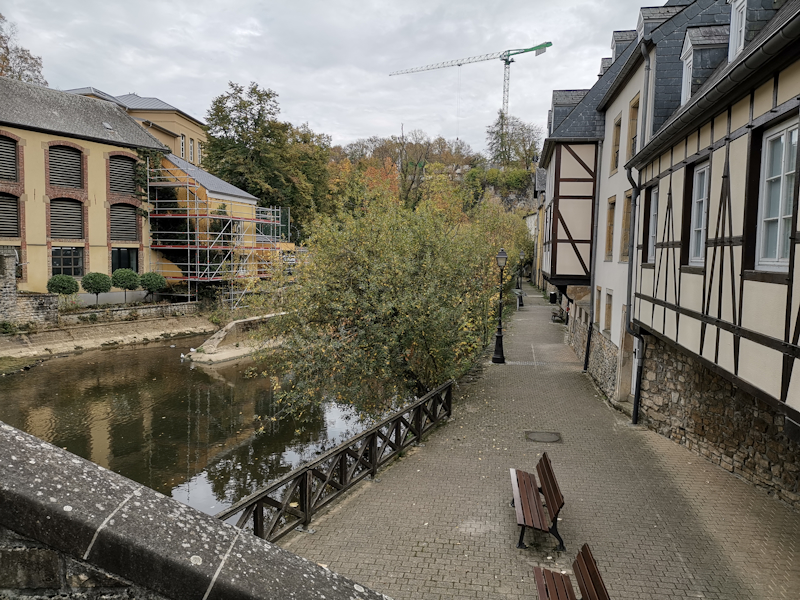
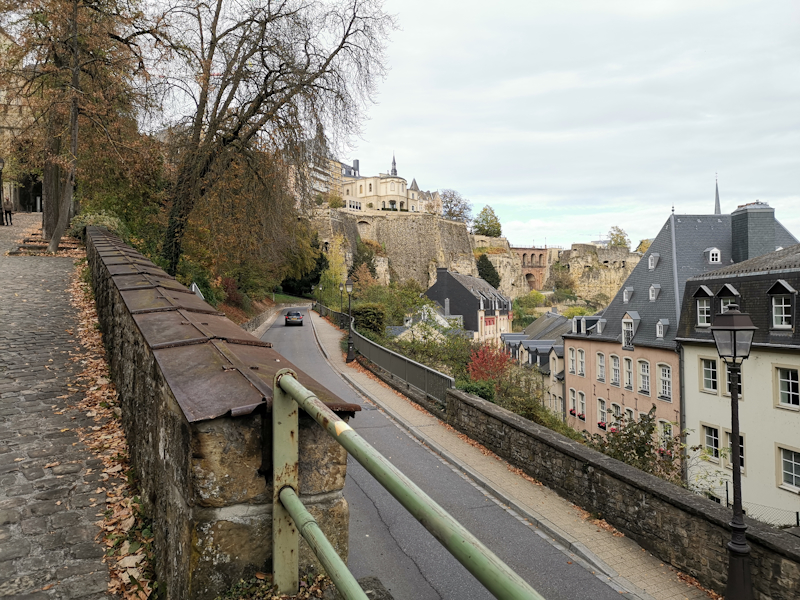
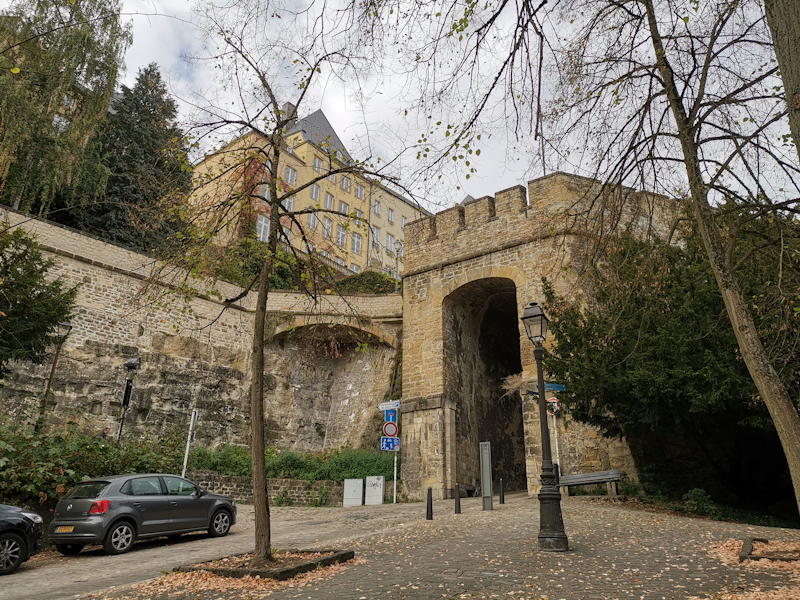
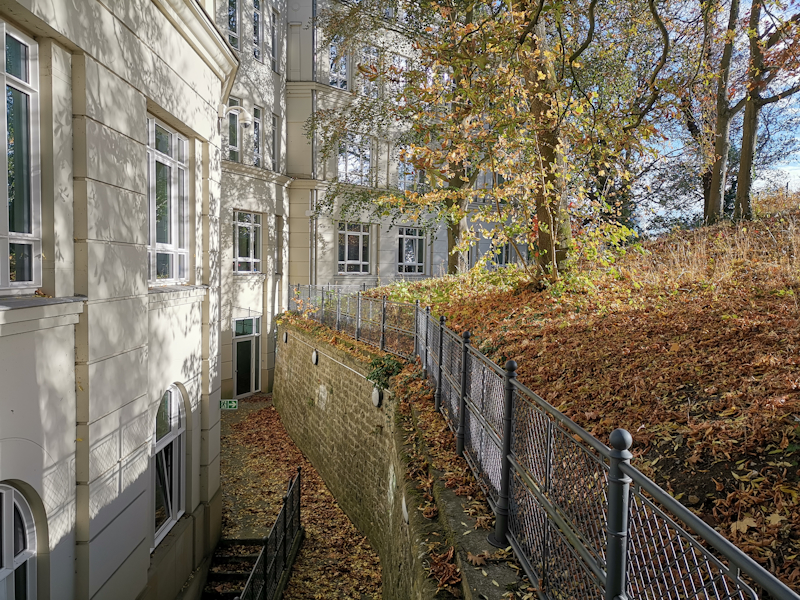
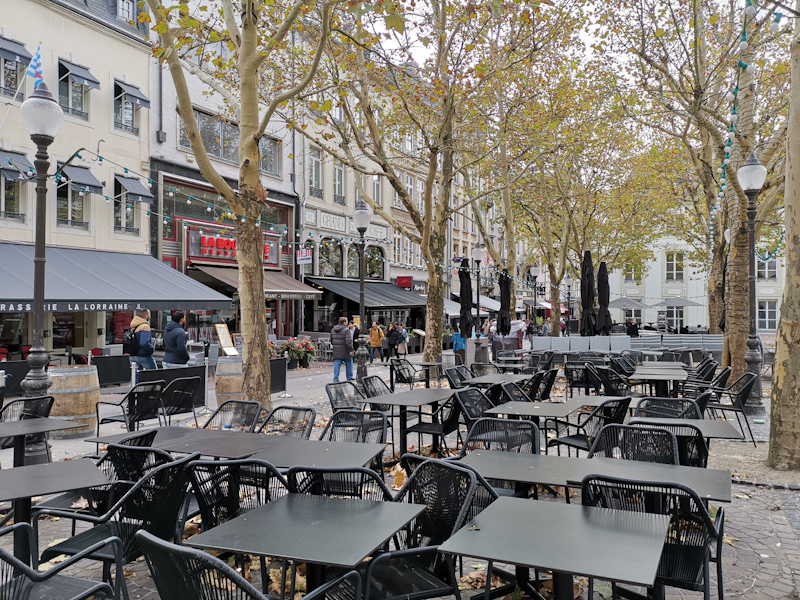








141 Comments
View All Comments
FunBunny2 - Sunday, November 18, 2018 - link
"the phone needs to dissipate less heat overall."not necessarily. IFF the following time period of lowered power draw is sufficient to dissipate that heat as well as the 'heat debt' from previous spike. the laws of thermodynamics can't be changed just because one wished them to.
melgross - Friday, November 16, 2018 - link
I don’t know how the 980 is outstanding when it does edge past Android SoCs, most of the time, but it’s a really lousy performer compared to the A12. Again, Android devices, and even parts, are being rated on a curve. If you give the A12 a grade of 100 on each rating, the the 980 is no more than a 70, and often a 50, or even a 40. That’s not outstanding, even if it’s much better than the really bad 970 from last year.tuxRoller - Saturday, November 17, 2018 - link
In spec, the 980 has the best efficiency of all soc.Your statement would hold of we were only concerned with the greatest performance.
zanon - Monday, November 19, 2018 - link
What? Doesn't look like that. The SPEC graphs show total energy consumption in J on the left and performance on the right. To get efficiency you need to divide the two right? It's not just absolute energy it's how much energy it takes for each unit of performance. In those tests it's showing the A12 takes 212 J/perf in the first and 107 in the second. The 980 is 368 and 157 respectively. Watts is energy over time, if one SoC can finish a given task faster then the total energy is less even if the peak is more. On a desktop or even tablet there may be cases of more sustained performance (although a high burst chip could just down clock or simply flat out offer better performance and just suggest plugging in), but phone workloads tend to be pretty bursty. Race-to-sleep isn't a bad strategy.Wilco1 - Monday, November 19, 2018 - link
The graph is very clear - 980 beats all other SoCs on efficiency. The energy bar is the total energy in Joules, so power in Watts (J/s) multiplied by time to finish (s), giving total Joules.tuxRoller - Tuesday, November 20, 2018 - link
Int: 9480JFp: 5337J
s.yu - Friday, November 16, 2018 - link
I don't really agree about using performance mode for benchmarks, unless battery tests were also run on performance mode.Obviously if you use performance mode your device will be more snappy, at the cost of battery life, but since they're not governed under the same mode, the battery and performance benefits are mutually exclusive, you can't have both, so you literally can't have the snappy experience under performance mode for the time length determined by a non-performance mode battery test, therefore testing it this way is not representative of real world experience.
Andrei Frumusanu - Friday, November 16, 2018 - link
Everything, including the battery tests, were in performance mode. Huawei pretty much recommended it to run it like this. It's actually more of an issue that it's not enabled out of the box, and many reviewers actually fell for this new behaviour.s.yu - Friday, November 16, 2018 - link
Oh! In that case it's not a problem. I saw another site testing everything in non-performance mode and some people were complaining..s.yu - Friday, November 16, 2018 - link
...but I'm still curious if changing the app signature would make a difference.